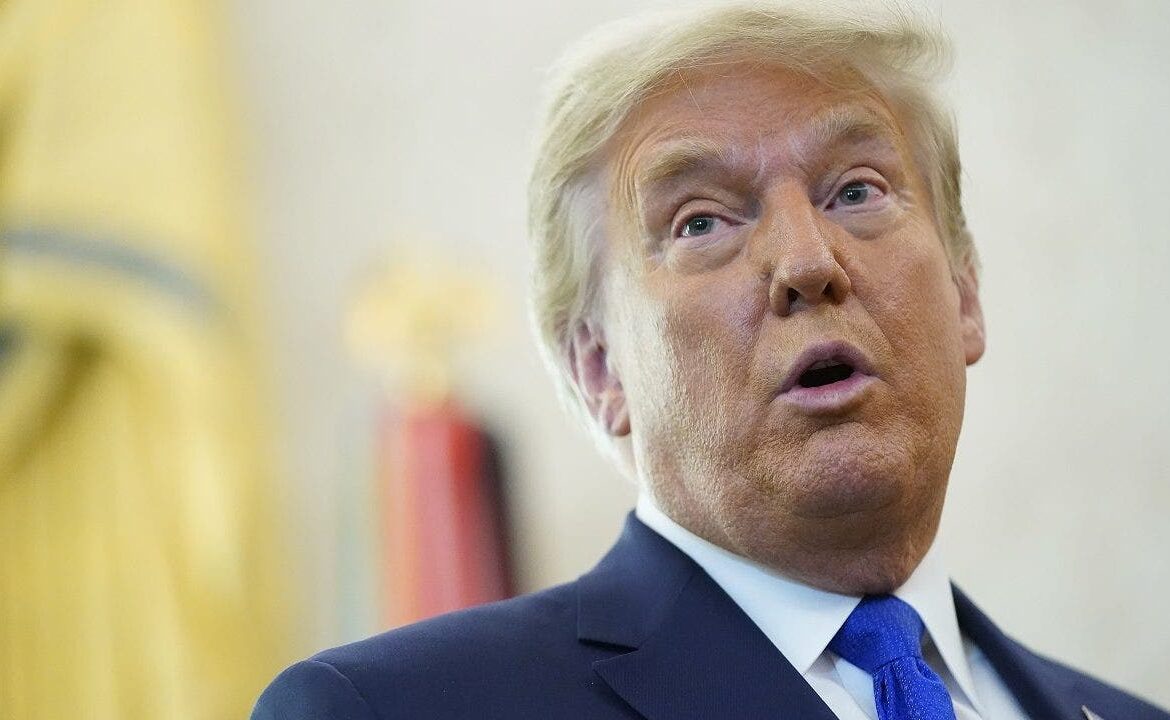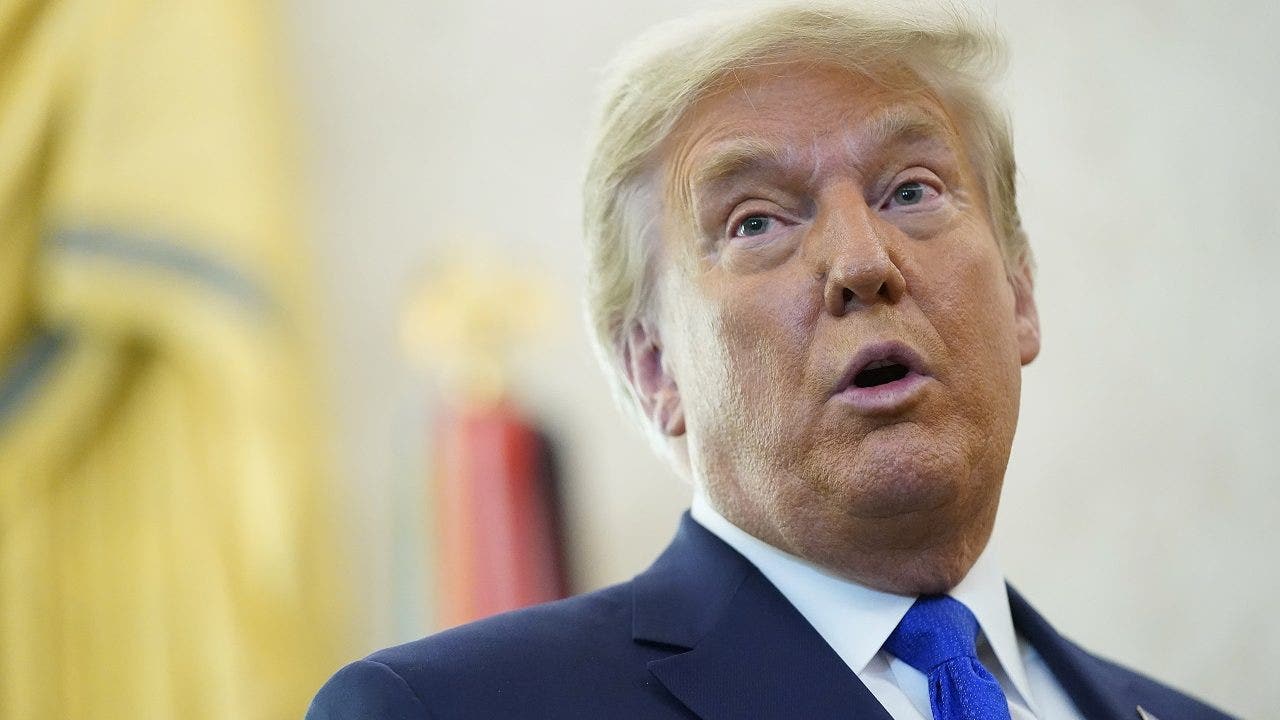
If Trump runs in a third party he would face ballot access, ‘sore loser’ law hurdles — but it’s not impossible

Donald Trump, heading into 2024 as a former president and leader of his party, is giving essentially the same answer he gave going into 2016 as an insurgent outsider when asked whether he would support the Republican presidential nominee.
Hugh Hewitt asked Trump in an interview whether he would commit to endorsing the GOP general election candidate, to which Trump responded, ‘It would have to depend on who the nominee was.’
Trump gave a similar answer in 2015 during the first Republican presidential primary debate of the 2016 cycle, hinting — or perhaps threatening — a third-party campaign should he lose the GOP nomination.
In such a scenario, Trump would face significant — but not insurmountable — ballot access hurdles if he were to become the first former president since Teddy Roosevelt to run as a third-party candidate.
The hurdles include early deadlines in some states and so-called ‘sore loser’ laws designed to make it more difficult for a candidate to run under a third party after losing one party’s primary.
‘He could do it. The Libertarians are on the ballot in all 50 states. I don’t think he will try to do it,’ Richard Winger, editor of Ballot Access News and a frequent advocate for third-party candidates, told Fox News Digital.
By most measures, Trump is the front-runner for the Republican nomination, but polling shows vulnerability. Florida Gov. Ron DeSantis has beaten Trump in several polls for a hypothetical one-on-one contest. In the more-likely scenario of a multi-candidate field, Trump leads DeSantis and all other potential challengers.
In one respect, it would be easier for Trump to get on the ballot than it was for another larger-than-life billionaire, Ross Perot in 1992. That year, Perot — who went on to win 19% of the popular vote — needed about 695,000 signatures to be on ballots in all 50 states and the District of Columbia.
After several states, including Oklahoma, Pennsylvania, Virginia and North Carolina, lightened their signature requirements, the number of signatures was 568,689 nationally in 2020 to be on the ballot in 50 states and D.C., Winger said.
Generally, the ‘sore loser’ laws either outright prohibit a candidate who competed in one party’s primary from running as an independent, or the state laws place the filing deadline to run as a third party or independent in a general election on the same day as filing to run in a party primary. Every state except Connecticut, Iowa and New York has some form of the law.
However, these laws were previously understood to apply only to down-ballot races such as governor, Congress or local races.
‘Until 2012, no state ever perceived a sore-loser law to apply to presidential primaries,’ Winger said. ‘That’s because it was always understood that in primaries people are voting for delegates to the national conventions, and in the general elections, voters are voting for presidential electors.’
In 2012, former New Mexico Republican Gov. Gary Johnson dropped out after a brief run in the GOP primary to run for president in the Libertarian Party. Michigan sought to block him from the state ballot, and a federal court sided with the state, ruling that it had the right to enforce the election law. Johnson reportedly missed the Michigan deadline by three minutes to withdraw from the state’s GOP primary ballot.
Republican Rep. John Anderson of Illinois managed to win 6% of the vote as an independent presidential candidate in 1980 after he briefly ran in the 1980 Republican primary. Anderson did not have the same problem as modern-day third parties, so there has been a ‘real regression’ for ballot access, Winger said.
The closest historical parallel would be the 1912 presidential election, when after being out of office for four years, Teddy Roosevelt challenged President William Howard Taft for the Republican nomination. After Taft won, Roosevelt ran under the Progressive Party, nicknamed the ‘Bull Moose’ party. The GOP split cut an easy path for Democrat Woodrow Wilson to win the presidency.
Ballot laws have changed since that era.
To be on all 50 state ballots, Trump or any major-party primary candidate would have choose to drop out of their race fairly early, according to a listing of state deadlines by the Center for Politics, a think tank at the University of Virginia.
North Carolina’s filing deadline is in March, and the Texas deadline is in May. New Mexico and Indiana have filing deadlines in June.
‘Trump would likely be starting such an effort late, and it may be that some deadlines will have already passed,’ Kyle Kondik, managing editor of Sabato’s Crystal Ball at the Center for Politics, told Fox News Digital in an email. ‘But even those deadlines could hypothetically be challenged in court.’
Another 13 states, including the populous states of Florida, Michigan, Illinois and New York, have filing deadlines in July for ballot access. The District of Columbia and 29 states, including the populous states of California and Colorado, and major battlegrounds such as Pennsylvania and Wisconsin, have deadlines in August.
The states of Arizona, Kentucky, Mississippi and Rhode Island allow candidates to get on the ballot as late as September before the November election.
‘A third-party run by Trump may be feasible, although the later he decides to do it, the less feasible it becomes, because of the various deadlines and requirements,’ Kondik added. ‘And, again, it may or may not be the case that sore loser laws impact him – as often seems to be the case with Donald Trump, there will be lawsuits.’
